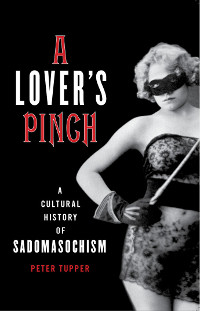A new, highly kinky novel called Fifty Shades of Grey, by E.L. James, which is getting play in surprisingly mainstream publications, few of which have anything good to say about its literary merits or gender/sexual politics. (The first book in the trilogy has over 6,600 ratings on Goodreads.)
What interests me in this book is that it apparently began as a fanfiction of the paranormal romance Twilight, called Master of the Universe with the two leads named “Bela” and “Edward”, and Edward’s Byronic flaw being ridiculous wealth and kinkiness instead of vampirism. (Bela’s still masochistic, virginal and co-dependent, and generally a clumsy twit.) This was rewritten for a pro-sale with the characters’ names changed to something else; basically, the serial numbers were filed off. (The original(?) text is still online.)
I don’t object to this kind of derivative work (see Harold Bloom’s theory of “strong misreading”), but I am curious what this means for erotica/romance publishing and writing. Female masochistic fantasy goes back at least as far as Wuthering Heights, but we seem to be getting closer to the core of it through a process akin to repeated distilling, resulting in the alcoholic syrup of pure masochism, but sold as romance. The problematic gender politics of Twilight become even more disturbing when removed from the world of vampires and werewolves and placed in the world of extremely wealthy and emotionally unstable men.
The Slate article on Fifty Shades ponders the prevalence of female masochism in this day and age, though in a narrow-minded way.
James has created perhaps the most relatable dominant and submissive couple to date, the Ross and Rachel of BDSM (for bondage, discipline, sadism, masochism) fiction. When faced with a room full of cables and hooks, Ana has the same reaction any average woman would have. She decides that Christian is a freak and a pervert with serious problems. Over the next few chapters her “thinking brain” is at war with her “subconscious,” which wants her to relent. “Stop thinking so much Ana,” Christian warns, sounding like an inspirational life coach, or Tim Gunn, and eventually she gives in, and of course, she is more “sated” and empowered than she’s ever been.
The article ends with the author reassuring the reader that men are far more likely to be masochists than sadists, “…proof that women have nothing to fear.” I’m not sure what to make of this statement. Is she reassuring the reader that men are really masochistic twerps?
Psychology Today has a more optimistic view, seeing the book as a good modelling of BDSM negotiation and also that the book should not be taken too literally.
The subject of this book should not be viewed through a socio-political lens since it lies in a realm that is beyond in a psychological, emotional and sensual world. It is an adult form of play that many people would rather just keep in their fantasies. Therefore, just because the book has become a hit in the suburbs, does not mean that all these female readers want to enact these roles. Some may and some may not, but you have to open up the topic with yourself and your partner in order to find out what you might want to try.
So, is fanfiction ready for the mainstream? Will there NYTimes bestseller lists be full of slash, hurt-comfort and Mary Sue stories and other tropes of bad fanfiction? If it does, I confidently predict it will be critically scorned. Does it need to be? There is a kind of rawness in fanfiction, that makes it a kind of outsider art, fiction written without any influence of criticism or commerce, and what it expresses is unfiltered, insatiable emotional need for affection, or even just attention, wrapped in complex manoeuvres to avoid being seen as being as powerful.
PS: is “E.L. James” supposed to echo “E.M. Hull”, author of The Sheik?




